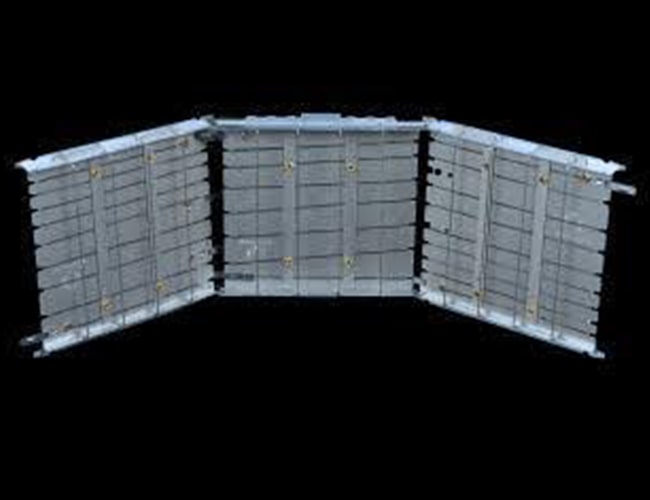Contact Us at

Electrical heating elements play a vital role in residential, commercial, and industrial applications, providing efficient heat generation for various devices. They are used in types of systems as water heater and ovens, industrial furnaces, and plastic moulding machines; these devices actually transform electrical energy into heat by using a process called resistive heating.
How Electrical Heating Elements Work:
The principle behind electrical heating components is Joule heating, which states that heat is produced when an electric current passes through a resistive conductor. Most sources of heating are prepared with materials with excellent thermal conductivity and high electrical resistance. This keeps them heating fast and consistently in a uniform manner and as well as last longer. Typical elements are nichrome, kanthal and carbon.
Types of Electrical Heating Elements:
The electrical heating elements are available in different shapes, sizes and design according to their purpose. They include such broadly-used ones as:
- Coil Heating Elements: These consist of coiled wires which are usually nichrome and are applied in appliances such as toasters, hair dryers and the electric stoves. They present a huge surface area that helps in heat dissipation, moreover, they are installable and replaceable.
- Tubular Heating Elements: These components have a robust design whereby they are made of metal sheaths and powder that is used to fill the element and this makes them ideal to be used in immersion tasks in liquids.
- Cartridge Heaters: These cylindrical, small, high-power components are placed into holes that have been drilled. Used in moulds, dies, and platens, they provide localised heating with precise temperature control.
- Ceramic Heating Elements: Made from ceramic materials with embedded resistance wires, they offer efficient heat transfer and thermal insulation. They are often used in hair straighteners, fan heaters, and space heaters.
- Flexible Heating Elements: Composed of thin, bendable materials such as silicone rubber or polyester, these are ideal for heating irregular surfaces. Applications include medical devices, battery warmers, and freeze protection.
Heating Elements Applications:
Electrical heating elements are used across a broad spectrum of industries due to their versatility and efficiency:
- Home Use: Heating elements are necessary for the daily operation of household appliances such electric ovens, kettles, irons, and geysers.
- HVAC Systems: Space heaters and heat pumps use elements to regulate indoor temperatures.
- Industrial processing: Heating elements are essential in plastic extrusion, metal processing, and drying systems.
- Medical Equipment: Medical and laboratory equipment, such as incubators, sterilisers, and diagnostic tools, often utilise precise heating controls.
- Automotive: Seat warmers, engine block heaters, and battery heaters in electric vehicles utilise heating elements.
Advantages and Considerations:
Electrical heating elements offer several advantages:
- Energy efficiency: These heating elements achieve near-perfect energy conversion, turning virtually all supplied electricity into heat output.
- Compact design: Elements can be tailored to fit small or irregular spaces.
- Control: With proper sensors and controllers, heat can be applied with high precision.
However, selection must consider factors like operating temperature, environment, required heat output, and durability. Overheating or poor installation can lead to premature failure or safety hazards.
Maintenance and Longevity of Heating Elements:
Heating elements need to be maintained on a regular basis to guarantee longevity and peak performance. Over time, oxidation, scale, and mechanical stress are some of the factors that might reduce efficiency. For example, limescale accumulation on tubular elements in water heaters can insulate heat, decrease efficiency, and raise energy consumption. Performance is maintained through routine examination and descaling.
In a similar vein, oven coil elements should be inspected for corrosion or damage since uneven wire can lead to the development of hotspots. To lessen oxidation in high-temperature settings, industrial heating systems frequently use inert atmospheres or protective coatings.
Emerging Technologies and Sustainability:
Improved heating elements are being produced because of advancements in material science. For instance, compared to conventional metals, graphene-based heaters provide ultra-fast heating, improved conductivity, and reduced energy usage. Because PTC (Positive Temperature Coefficient) components self-regulate temperature and lower the risk of overheating, they are becoming more and more common in appliances like hair dryers and car seat warmers. Inductive heating, which improves efficiency by directly heating conductive materials without physical contact using electromagnetic fields, is also being investigated for industrial applications.
Sustainability is another key focus. Manufacturers are designing energy-efficient heating systems compatible with renewable energy sources, such as solar-powered water heaters. Recycling programs for end-of-life heating elements, particularly those containing rare metals like nichrome, are also being developed to minimise environmental impact.
Many modern comforts and operations are made possible by electrical heating elements. Because of their effectiveness, simplicity, and adaptability, they are crucial in all sectors. The need for smarter, safer, and more efficient heating elements will only increase as technology develops, particularly in the areas of electric transportation and renewable energy.
Related Link: Mica Heating Elements
